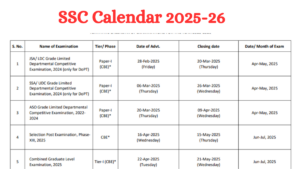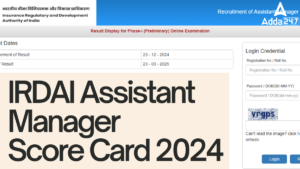Dear Students,
As per today’s scenario in the Banking exam even in other exams like SSC, it has become important that to solve a particular problem quickly you have to know the concept behind the question and also the way how to solve that problem quickly. Keeping in mind that thing we are providing here some important study notes and short tricks of various topics of Reasoning Ability so that a student can attempt more questions in less time (especially in Banking and SSC exams) and can make a higher probability of being selected. Best of hard work to all students. Keep using Bankersadda.
Seating Arrangement
Introduction
⇒ In seating arrangement, we are generally asked to arrange a group of people according to the given conditions. They may have to be seated around a table, the table could be of any shape-circular, square, rectangular, pentagonal or any other. To solve seating arrangement problems on the basis of the information given in the equation.
⇒ It is one of the important part of the reasoning section for any competitive exam (specially Bank PO). In this part, questions are based on set of information containing set of conditions which gives hidden information followed by set of questions.
⇒ These type of questions judge the ability of a candidates to analyze the information and solve the questions by the help of pictorial figures.
CONCEPTS:
☞ Linear arrangement: – In this arrangement, there can be single row or parallel rows facing each other or opposite.
(i)
(Directions if the people are facing north)
(ii)
(Directions if the people are facing South)
(iii)
(Directions if the people are seating parallel to each other facing South and North)
☞ Example: A, B, C, D, E, F and G are sitting in a row facing the North.
F is to the immediate right of E.
E is 4th to the right of G.
C is neighbor of B and D.
person who is third to the left of D is at one of the ends.
☞ Circular Arrangement: In this Arrangement, people are sitting around a circle facing towards or outside the centre.
(i)
(ii)
(iii)
☞ Example: Abraham, Bittu, chris, Dilip, Ela, Fan, Gautam and Henry are sitting around a circle facing towards the centre. Dilip is second to the left of Fan and third to the right of Henry. Abraham is second to the right of Fan and immediate neighbor of Henry. Chris is second to the right of Bittu and Fan is third to the right of Bittu. Gautam is not an immediate neighbor of Fan.
☞ Rectangular/square Arrangement: In this Arrangement, people are sitting around a rectangle or square facing towards or outside the centre.
(i)
(ii)
(iii)
(People sitting at middle of the side, facing the centre and people sitting at edge/corner facing outside the centre)
☞ Example: Eight family members Dhruv, Garima, Avinash, Varsha, Aakash, Deepti, Charu and Moksh are sitting around a square table in such a way that two persons sit on each of the four sides of the table facing the centre. Members sitting on opposite sides are exactly facing opposite to each other.
(i) Aakash and Garima are exactly opposite to each other.
(ii) Deepti is immediately right to Garima.
(iii) Dhruv and Moksh are sitting on the same side.
(iv) Moksh is exactly opposite of Avinash, who is to the immediate left of Varsha.
(v) Dhruv is towards right of deepti.
☞ Single Dimensions: These are relatively straight forward questions. In these type, information are arranged by following a kind of symmetry.
☞ Multi Dimensions: These type of questions are complex in nature. In these different information of same person are given i.e. their sex, city professions, marriage etc.
Important points to be noted during solving the questions:
☞ Step I: The data given in such questions specify the positions of some or all the individuals in arrangement. The positions are specified through conditions involving specified persons sitting (or not sitting) opposite each other or a particular person sitting to the right of left of another person etc.
☞ Step II: Once you read the data, first draw the shape (Circle, square, rectangle, pentagaon, etc) specified in the data and then mark the slots (empty spaces) in the sitting arrangement.
☞ Step III: Using all definite information, fill up as many slots (empty places) as possible. Means always be careful to choose the correct starting point. Those information which are (100%) confirm should be taken first.
☞ Step IV: Never assume anything in the questions.
☞ Step V: In case, if information cannot be use, mark that information and use them, later when the problems calls for it.
☞ Step VI: Now, move on the comparative information. Taking comparative information and consider all possibilities and choose the possibility which does not violate any condition.
☞ Step VII: Be careful with certain words like “not”, “only”, “who”, “and”.
☞ Step VIII: Some gender defining terms are like “him”, “her”, “he”, “she” will help you decode the information.
Some specific type of statements:
☞ A is between B and C
⇒ In this case there are two possibilities
☞ A, who is 3rd to the left of B
☞ A, who is third to the right of B
| ☞ B is sitting to the immediate left of A, who is sitting to the immediate left of C. |
☞ B, who is sitting to the immediate left of A and to the immediate right of C.
☞ B and C are adjacent of A:-
In this case there are two possibilities
An example of Seating Arrangement with Blood Relation:
☞ Example: J, P, Q, R, S, T, U and V are four married couples sitting in a circle facing the centre, the profession of the males within the group are lecturer, lawyer, doctor and scientist. Among the males, only R (the lawyer) and V (the scientist) are sitting together. Each man is seated besides his wife.
U the wife of the lecturer is seated second to the right of V. T is seated between U and V. P is the wife of the doctor. Q is not the doctor and not the immediate neighbor of Doctor . S is a male.
Important points to Remember:
☞ (1) The information like “A and B are sitting farthest from each other “or” A and B sit across the table” imply that A and B sit opposite to each other.
☞ (2) Go “Anticlockwise” if anybody’s right has to be located, and go “Clockwise” if somebody’s left has to be located.
☞ (3) Sometimes Questions demand a clear sense of direction, so you have to be well aware with the directional facts.
☞ (4) There shouldn’t be any confusion about relation and generation tree.
☞ (5) Sometimes in the seating Arrangement Geometry rules also applicable.
☞ Example: Ashok is 90° Right of Seema, who is 45° right of Ruchi





 The Hindu Review October 2022: Download ...
The Hindu Review October 2022: Download ...
 SSC Calendar 2025-26 Out, Check SSC CGL,...
SSC Calendar 2025-26 Out, Check SSC CGL,...
 IRDAI Assistant Manager Score Card 2024 ...
IRDAI Assistant Manager Score Card 2024 ...




